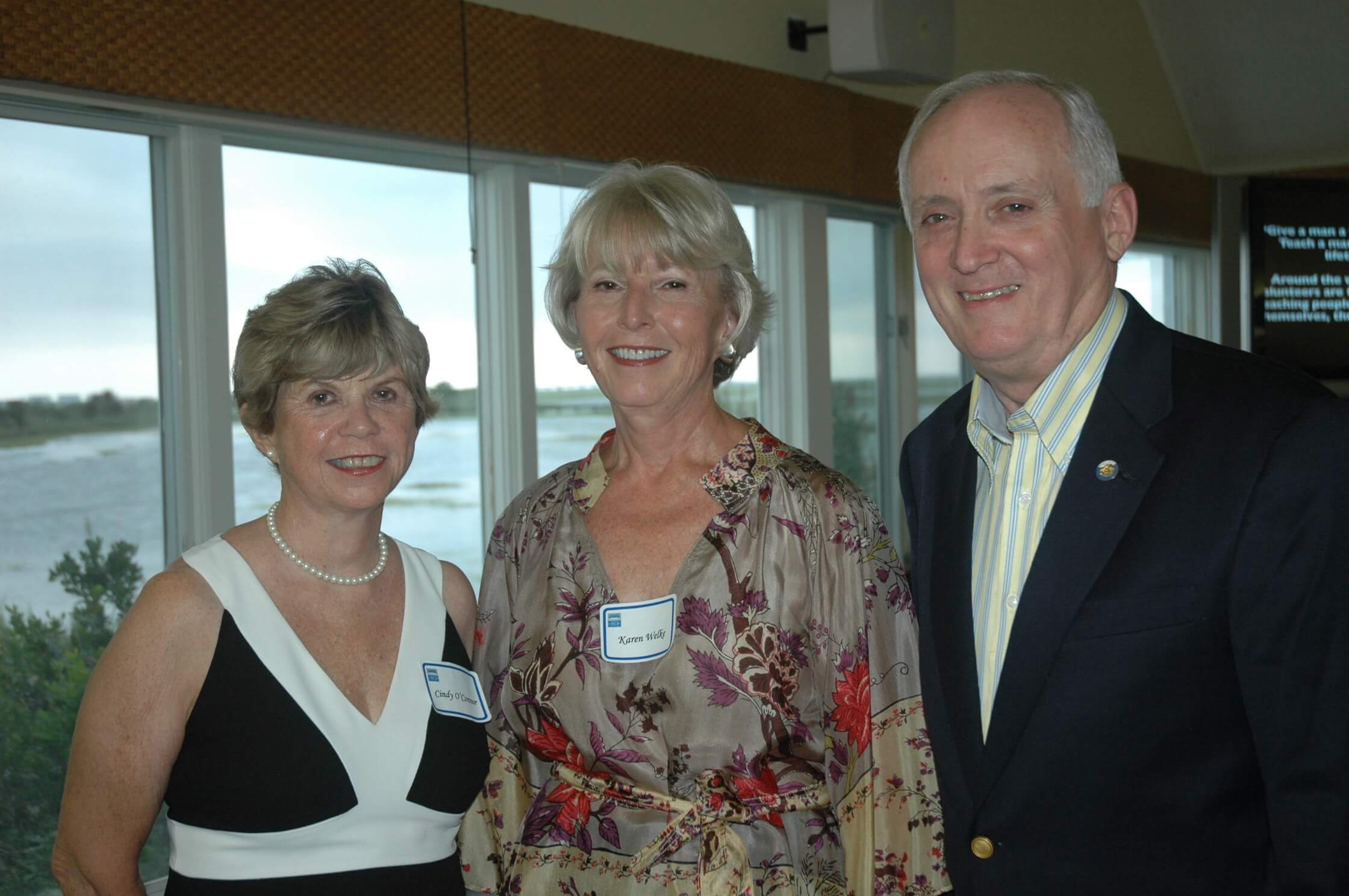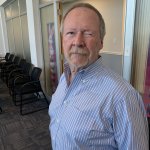STONE HARBOR MANOR — Many baby boomers learned about the SS Hope from “Weekly Reader,” a widely read school publication in the late 1950s and 60s.
That was the first glimpse that Dr. John P. Howe III had of Project HOPE, the organization of which he has been president and chief executive officer since May 1, 2001.
Howe visited the Wetlands Institute on Aug. 10 for an evening reception, and to give an overview on what the people-to-people humanitarian organization is doing to alleviate human suffering, largely with private funding.
Howe is a board certified physician in both cardiology and internal medicine.
The highly acclaimed physician termed the evening a “grand occasion.” He lauded Karen Welke, who summers locally, and who “has been a very significant member of the Project HOPE board.
Her job was to bring together over 100 community leaders to talk about Project HOPE.
Howe told the Herald in a telephone interview from his Connecticut vacation home that Project HOPE has been “a source of inspiration for me, personally and professionally.”
From its initial venture in humanitarian aid, when Dr. Bill Walsh first asked President Dwight D. Eisenhower for a mothballed hospital ship to take to foreign countries whose residents needed medical attention, until today, Project HOPE has helped countless thousands, many of whom had a changed idea about America and its people after their cures.
At the present, Project HOPE has over 700 staff members in 34 countries and 80 programs.
When SS Hope first set sail, it was the first-ever peacetime hospital ship to go to those far-flung nations.
In 1958, when William Lederer and Eugene Burdick’s best-seller “The Ugly American” was a must-read for many who wanted to know why many nations disliked this nation, Walsh went to Eisenhower and urged the ship to allow “people-to-people interaction,” Howe said.
With the President’s backing, the mothballed USNS Consolation was repainted white with a huge red cross on its sides and set sail for the next 12 years being America’s medical ambassador.
“It served as a platform for volunteer doctors and nurses who served side by side around the world and became an icon of American humanity,” Howe said.
In the mid-1970s, SS Hope’s days were numbered. Spare parts were becoming increasingly hard to find, so it was returned to the Navy.
Instead of closing down, the idea was hatched to become Project HOPE and serve in many countries, instead of just one nation at a time, Howe said.
Shore-based clinics evaluate patients and treat less serious cases. Those who require intensive care or operations are scheduled to be taken to the hospital ships.
After the deadly tsunami that struck Southeast Asia in December 26, 2004, Navy Admiral Vern Clark called Howe about incorporating Project HOPE’s volunteers aboard the USNS Mercy, a 1,000-bed intensive-care ship, with many operating rooms aboard.
The Mercy was dispatched to Banda Ache, Sumatra where devastation was enormous.
“Admiral Clark called it a novel idea,” Howe said. It was the first time in American history that a U.S. Navy ship was staffed mostly with volunteer physicians and nurses.
“We had 4,000 doctors and nurses in 210 spaces on the ship.
Initially the Navy had some question about how long it would take to staff the vessel with volunteers.
“That was quickly put to rest when over two thirds of the first rotation came from Harvard’s principal teaching hospital, Massachusetts General in Boston,” said Howe.
Over the next four months, Project HOPE volunteers cared for 49,500 Indonesians.
Howe also found it amazing that, prior to the tsunami, a BBC poll in heavily Muslim Indonesia found only 20 percent had a favorable view of American.
“After the ship went home, a similar poll was taken and over 65 percent said they had a favorable view of Americans. The volunteer physicians and nurses had broken down cultural barriers,”
This year the Navy is using Project HOPE volunteers aboard the USNS Comfort, currently in Peru, one of 12 Latin American nations to be visited by the ship and HOPE volunteers.
“Already the volunteers have cared for 35,000 patients,” Howe said.
Those volunteers make significant sacrifices, even for a few weeks, said Howe, since some leave practices for humanitarian aid.
Lengths of service vary according to distance, he said.
Those serving in Southeast Asia may spend four to six weeks. Others, in Latin America, and thus closer to home, may serve from 17-21 days.
“Each one is a volunteer giving up their personal income to join Project HOPE,” said Howe.
At the same time, the USNS Peleliu is visiting the Philippines, Vietnam and Papua, New Guinea with Project HOPE volunteers.
“Project HOPE is viewed by many as the grand facilitator bringing volunteers and corporations together with the help of the U.S. Navy to effect seemingly impossible projects, such as the Comfort’s visit to South America,” said Howe.
In late July, Howe flew to Managua, Nicaragua to visit the ship when it visited Corinto, a coastal town on the nation’s Pacific Ocean side.
“It was compelling, as I stood on the dock with Nicaraguan Vice President Jaime Morales,” Howe said. “He told me that he was filled with emotion as he looked at the great white ship at anchor. He said it was 41 years before, in 1966 he stood on the same dock and looked at the SS Hope. He flew out to the ship to thank the volunteer doctors and nurses.”
On returning, he invited Howe to his residence in Managua for lunch.
“What began as a mission of health became a mission of politics as well,” said Howe.
He said at lunch, the topic was of Project HOPE and its “medical diplomacy in Nicaragua and Latin America and around the world,” Howe said.
“Project HOPE is trusted throughout the world,” said Howe.
It has been in Egypt since 1975 and in Indonesia since 1960. Its 25th anniversary in China is nearing, he said.
Although delivery of service changed over time from the original ship to land-based clinics, the mission remains unchanged, Howe said.
Those missions are Health education and humanitarian aid.
Around 2 million volunteer doctors and nurses as well as $2 billion in medical supplies have made it possible to give hope to patients in over 80 countries.
“What is remarkable is that Project HOPE received 90 percent of its funding from individuals, foundations and corporations, in other words, the private sector,” said Howe.
“We are grateful for the 10 percent support from the State Department and USAID (Agency for International Development, but our principal ties are with individuals and foundations that make our work possible,” Howe said.
“Our stewardship has been well recognized for the past 10 years. Over 90 percent of our revenues are expended on our programs,” he added. “Less than 10 percent goes to administration and fund raising costs.”








